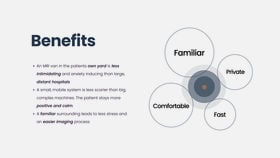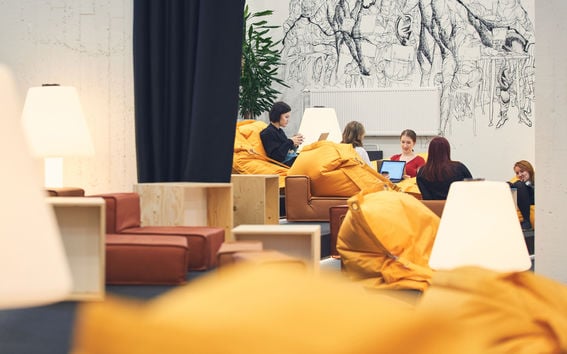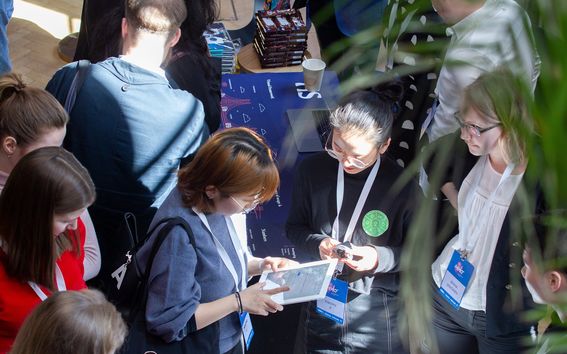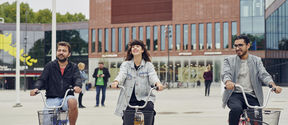Team's description of the project
Ageing population in the Nordics is a phenomenon that has topped every megatrend report for quite some time now. But what’s less spoken about is the fact that due to the advancement of medical technology the ‘quality of health’ of the elderly is increasingly improving which creates a massive strain on non-urgent healthcare systems. One such system is the diagnostic and preventive MRI.
After conversations with doctors and nurses we realized that the threshold for sending elderly patients for an MRI was extremely low (in Finland). Which meant a lot of these patients were asked to get MRI’s done often. Another Nordic phenomenon important to mention here is the population distribution – more than 65% of the population in remote areas is elderly, these remote areas are extremely sparsely populated and most of these residents rely on a central hospital which is hundreds of kilometres away.
Considering the challenges of multiple actors in relation to one MRI, we choose to work with a new low-field mobile MRI technology – AMRI, which is being developed at Aalto University. This technology makes the MRI unit smaller, lighter and mobile. Owing to this, we designed a new service platform – AMRI Remote. We aim to achieve a systemic healthcare transition beyond logistic, monetary, clinical or geographical limitations.
Our platform (AMRI Remote) works across the lifecycle of an MRI. In 2030, MRI comes home. (whichever corner of the country that it may be) This service tries to minimize time, effort and money an otherwise complex and tedious process demands. AMRI Remote functions across the three largest northernmost hospitals in Finland, Sweden and Norway optimizing the geographical, cultural and systematic proximity between the three. To know more about the larger benefits of this service, see images in the gallery below.
How AMRI Remote works in a gist
- When a patient visits their local doctor and they see the need for an MRI, all the doctor needs to do is make a request on the AMRI Remote platform
- The algorithm of the platform then filters through all the requests and creates best routes for AMRI vans leaving from all three hospitals
- The platform is connected to each patients local health system (i.e. Omakanta for a patient in Finland)
- The van then sets out on its route to serve the assigned requests
- It returns to its home hospital on completion of the route
- The reports are generated by this hospital in charge and uploaded on the system
- The platform recognizes the nationality of the patient and asks to transfer the report to their own health system for their doctors to see (again, Omakanta for a patient in Finland)
- The patient can view all their reports and data on their own profile as per usual. To see this process in context, please watch the video below.
_
In the autumn of 2021 students enrolled in Emerging Designs course were given a brief to design concept for tackling problems in the healthcare system. The focus was on developing healthcare and social care in sparsely populated areas of the Nordics, visioned in 2030 with distance spanning solutions. Altogether seven concepts were created and AMRI Remote is one of them.



















